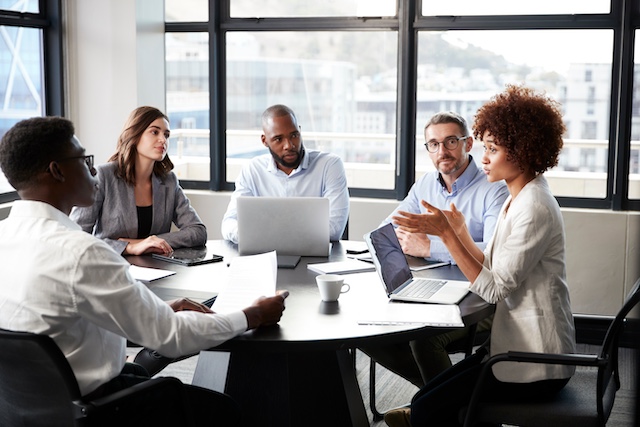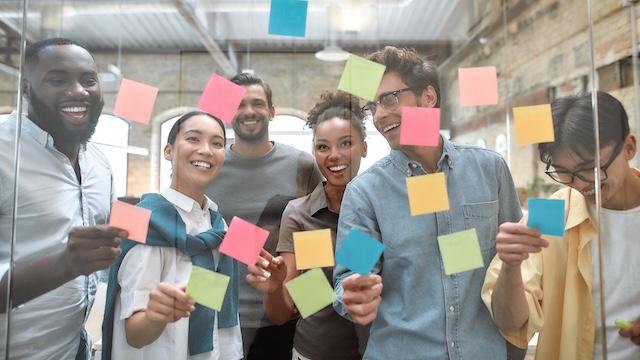Letting an employee go is difficult for all parties involved, and there are right ways and wrong ways to lay an employee off. The process requires a fine balance of legal compliance and human compassion. After all, from an employee’s point of view, being laid off is life-changing and often difficult to accept. This is why striking the right tone is essential, not only when delivering the news verbally, but also in any correspondence you are required to send.
When done well, layoff letters not only serve a legal purpose, they can also soften the impact of the news and help when it comes to communicating layoffs to remaining employees. With this in mind, in this article we will provide you with advice on how to create professional and compassionate layoff letters for when you need to terminate an employee’s contract, including a template you can use as a starting point.
What Is a Layoff Letter / Employee Termination Letter?
As the name suggests, layoff letters or notices are notifications that are sent to employees when they are removed from their position due to circumstances outside their control. This could include instances such as when an organization chooses to downsize their teams due to mergers, acquisitions, or poor financial conditions, for example, as opposed to the employee being fired for poor performance. The correspondence gives context to the situation of the receiver’s termination and informs them about their last day with the company.
You may use the letter to give employees recommendations for what their next move should be. Businesses that offer outplacement services to their team members may include details on how to utilize these programs. The letter can also let the laid-off professional know if there’s an upcoming informational meeting with the human resource department that they should attend.
Seen as a common courtesy, in addition to being a legal requirement, sending layoff notices will typically reduce the likelihood of potential lawsuits and employee backlash, as well as help to prevent the business from developing a negative reputation, both internally and among customers and the public. After all, remaining employees may feel the organization doesn’t have their best interests at heart if colleagues are let go without official notice by way of a letter, which may lead to unhappy reviews about the company from ex-employees and resentment/uncertainty building within the remaining workforce.
How to write a termination letter to an employee
Layoff letters should be addressed to each impacted professional individual, and should include the employee’s full name, workplace ID number, and job title to ensure no identities are mistaken. Clearly identifying the terminated employee in the letter will eliminate some of their doubts about their situation.
The date and time frame of the layoff must also be incorporated into the letter. Letting a team member know when their final day with the company is will help them make plans for what to do after their termination. Some forms of RIF & termination are only temporary, so be sure to check the layoff’s permanence to provide your employee with complete and accurate information.
The final purpose of a layoff letter should be to provide some basic support to the employee as they come to terms with what has happened. This should include details of who inside the business they can speak to about the situation should they have any questions, as well as any details about their severance packages, pensions, unused paid time off, how they may be compensated, and outplacement support.
Offering your sympathies and sharing your gratitude with the impacted employee through the layoff letter can be a nice gesture that shows the employee that the organization does care for their team, even while making difficult business decisions.
 Layoff Letter Template
Layoff Letter Template
Below we have outlined what a professional yet compassionate layoff letter may look like. This can be used as a basic template.
Dear [employee name],
I regret to inform you that as of [termination date], you will be laid off from your position as [title]. [Company name] needed to [company action such as downsize or temporarily terminate] its employees due to [reason for the layoff, like a merger, acquisition or business performance].
Your last paycheck with [company name] will be deposited to your bank account on [deposit date] or mailed to you if you do not have direct deposit. Any paid time off you haven’t used will be added to your paycheck’s total. Your other benefits with [company name] will be available until [date] (Note: Companies often extend healthcare benefits beyond the end of the month, so if this date is different to the termination date, it is important to specify.)
With your termination, please return the following items to [department name] by [return date]:
[List all required items in bulleted form]
Please know that we greatly appreciate the contributions you have made during your time at [company name] and we wish you the best in your career. Our human resources department will contact you on [contact date] to conduct your exit interview.
If you have any concerns or questions regarding your termination, please contact [your line manager or a member of the HR team] here [insert relevant emails/phone numbers].
Sincerely,
[Your name]
[Title]
Layoffs are sometimes unavoidable for organizations facing circumstances outside of their control. Understanding how to write a professional layoff letter will give your impacted employees the empathy they deserve—and the information you are required to provide—during a difficult time.
* All liability with respect to actions taken or not taken based on the contents of this article are hereby expressly disclaimed. The content in this document is provided “as is” and no representations are made that the content is error-free. The information provided in this document does not, and is not intended to, constitute legal advice; instead, all information, content, and materials available in this document are for general informational purposes only. Information contained within this publication may not constitute the most up-to-date legal or other information. Readers of this publication should contact their attorney to obtain advice with respect to any particular legal matter. Only your individual attorney can provide assurances that the information contained herein – and your interpretation of it – is applicable or appropriate to your particular situation. INTOO’s outplacement program helps employees transition to new jobs through an unlimited number of hours of one-on-one, on-demand coaching from premier career counselors, resume reviews, and other career services. Learn more about what outplacement is how our outplacement program can benefit your company when you’re transitioning employees.


 Layoff Letter Template
Layoff Letter Template








